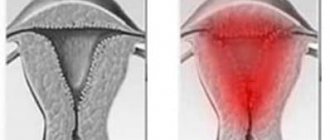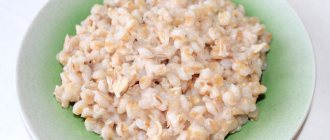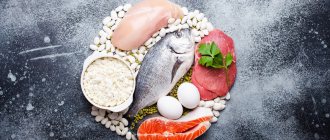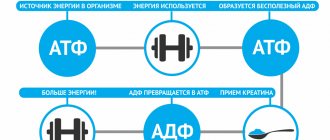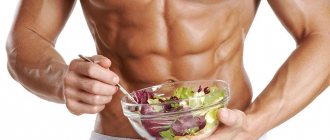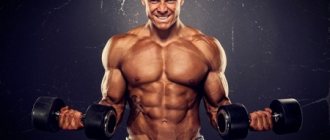Inner frame
Walking around the equator
It is estimated that during the day a person takes up to 30 thousand steps, that is, about 20 kilometers. Every 5.5 years it imperceptibly makes a journey equal to the circumference of the equator.
How much does a human skeleton weigh?
The mass of the human skeleton is about 11 kilograms.
When is a person taller: in the morning or in the evening?
Due to the flattening of the intervertebral cartilages, a person’s height decreases by about 1.5 cm in the evening. By the age of 80, a person’s height decreases by 5–7 cm compared to the age of forty.
How many bones are there in the skull?
The human skull consists of 23 bones. Only two bones of the skull - the mandibular and hyoid - are movable, the rest are firmly connected by sutures.
Stronger than brick and granite
Bone material is 30 times stronger than brick and 2.5 times stronger than granite. The large femur can withstand a vertical load of one and a half tons.
It can withstand a load of 350 kilograms
The strongest ligament in the human body, the ligament of Bertinius, which strengthens the hip joint, can withstand a load of 350 kilograms.
How many muscles does a person have?
The amount of muscle a person has is not the same for all people. Within normal limits, it ranges from 400 to 680 muscles. If all these muscles were tense, they would cause a pressure of approximately 25 tons. A grasshopper has about 900 muscles, and some types of caterpillars have even about 4,000. The total weight of all muscles is 40% of the total body weight in men, and 30% in women.
Which organ loses a lot of heat?
The efficiency of human muscles is 20%. The remaining 80% is spent on heat losses.
Where are the strongest muscles located?
The strongest are those located on both sides of the mouth and are responsible for clenching the jaws. They are capable of developing a force of about 70 kilograms.
Who loses more energy: a crying person or a laughing person?
According to research by French neurologists, a crying person uses 43 facial muscles, while a laughing person uses only 17. Thus, laughing is energetically more beneficial than crying.
What is the time of greatest muscle activity?
It is noted that muscles work most effectively at 13:00. 30 minutes.
Oxygen-consuming organ. Who is he?
Up to 60% of the oxygen entering the body is consumed by muscles.
Rhythm is your assistant
Rhythm is an important element of work, and everyone should learn from their heart in this regard: if you work rhythmically, then the work will be productive and you will have the strength to work for a long time.
When does the biological clock break?
Frequent disturbances in the physiological day-night cycle can lead to a painful disorder of a person’s internal “biological clock”.
Can you trust
The standards that we will present were calculated using medical research and scientific developments. These are the numbers we should strive for, according to our body type and age.
There are special devices (analyzer scales) that work using the indigant resistance method; they are capable of determining all the parameters described below. This measurement method is called bioelectrical impedance analysis (bioimpedance).
This procedure is not recommended during pregnancy, or for those who have pacemakers or other electrical implants.
Breath
How much air can you breathe?
Ventilation of the lungs (the number of breaths multiplied by the volume of inhaled air) in a healthy person reaches 5–9 liters per minute. At rest, a person makes an average of 16 respiratory movements per minute. This is about 23,000 per day. At the same time, about 7,000 liters of air pass through the lungs. The minute volume of human breathing (the amount of air passed through the lungs in one minute) is 5–8 liters per minute at rest, and during physical work it can reach more than 100 liters per minute.
Breathe calmly
A person at rest consumes 400–500 liters of oxygen per day, making 12–20 inhalations and exhalations per minute. The respiratory rate of a horse is 12 inhalations and exhalations per minute, a rat is 60, and a canary is 108.
Who cheers us up?
Negatively charged ions of air gases are friends of health; they make a person cheerful and efficient.
Biovacuum cleaner
The ciliated epithelium of the human respiratory tract carries out up to 20–30 g of dust per day.
Motor.
This is one of the main functions of skeletal muscles. Muscles are only able to develop force when they are shortened (i.e. they can only pull, not push); therefore, in order to dislodge a bone and then return it to its original position, at least two muscles or two groups of muscles are needed. Pairs of muscles that act in this way are called antagonists. The classification of muscles according to the types of movements produced by pairs of antagonist muscles is extensive; Let's focus on one of the main couples. The flexors bend the limb by pulling two skeletal elements towards each other; extensors straighten the limb. Let's consider the simplest movement - bending the arm at the elbow. It involves two groups of shoulder muscles: the anterior (flexors) and the posterior (extensors). The anterior group of muscles consists of the biceps brachii (biceps) and brachialis muscles, and the posterior group consists of the triceps muscle (triceps) and olecranon minor. The anterior group, passing over the elbow joint, contracts when the arm is bent, and the posterior group, passing behind the joint, relaxes. When you straighten your arm, the triceps shortens and the biceps gradually relaxes, thereby ensuring smooth movement.
Very rarely, only one pair of antagonist muscles is involved in the movement. Typically, each individual movement is driven by muscle groups; muscles that act together and unidirectionally (for example, a group of flexors) are called synergists.
Circulation
Blood plasma... and ancient seas
The composition of blood plasma resembles the composition of the water of the ancient seas on Earth, in which life originated.
Twice the length of the equator
The total length of blood capillaries in the human body is approximately 100,000 kilometers. This is 2.5 times the length of the earth's equator, and the total internal area is 2,400 m2.
Pump that lasts a lifetime
Over 60 years of ordinary, not very stressful life, the human heart makes more than 2,000,000,000 contractions. A tractor would do the same work if it lifted a boulder weighing 65 tons from sea level to a height of 5,500 meters.
When is there more cholesterol?
100 ml of blood of a healthy person contains 20–250 mg of cholesterol in autumn and winter, and only 170–180 mg in summer and spring.
Heart "shirt"
The heart has a chemise - a layer of connective tissue; There is a small amount of fluid between the heart and the “shirt”. The pericardial sac (“heart sac”) protects the working heart muscle.
Flattened red balls
Red blood cells, or red blood cells, whose total surface area is 3,400 m2. Every day, about 2,000,000,000 of them die in the body, which is 0.01% of their total number. The total surface area of all red blood cells is 3,400 m2. There are 5,000,000 red blood cells in each mm3 of blood, and in all five liters contained in the body of an adult there are 25,000,000,000,000. If you lay out all these red blood cells in a row, the resulting chain will stretch for 200,000 kilometers, encircling the globe five times along the equator.
"Sprints" within us
Almost all cells of the human body have nuclei that control all physiological processes in the cell itself and participate in the process of cell division. The only exception is red blood cells. They are born with a nucleus, but already in the early stages of development, they lose it, thereby losing the ability to reproduce. New red blood cells are formed in the red bone marrow from stem cells. About 2,500,000 red blood cells are produced every second and about the same number die. In one day, an erythrocyte travels about 15 kilometers in blood vessels, supplying tissues with oxygen and taking away carbon dioxide from them. During its existence, one red blood cell travels an average distance of 1,800 kilometers.
They live to die
Blood cells constantly die and are replaced by new ones. The life of erythrocytes (red blood cells) lasts 90–125 days, leukocytes (white blood cells) - from several hours to several months, depending on the type of leukocytes. In the blood of an adult, about a billion red blood cells and five billion leukocytes die every hour. They will be replaced by new blood cells. During the day, 25 grams of blood undergoes complete regeneration.
Thinner than a hair
Blood capillaries are 10 times thinner than hair.
That's the speed!
Within one minute, the heart pumps about 4 liters of blood into the aorta. The speed of movement in the aorta is 0.5 m/sec, and through the capillaries, blood flows at a speed of 0.5 mm/sec. A complete circulation of blood through both circles of blood circulation is completed in 21–22 seconds.
A special substance in blood
Each red blood cell contains 265,000,000 hemoglobin molecules. The assembly of its molecule takes only 90 seconds. Every second, 6.5∙1014 hemoglobin molecules are synthesized in the human body. 100 ml of human blood contains 13–16 g of hemoglobin. One gram of hemoglobin can bind up to 1.34 ml of oxygen. At rest, about 4 l/min flows through the human heart, which provides tissues with about 400 ml of oxygen.
Ah, these “thin tubes”!
The thickness of the artery walls is 0.8–0.9 mm. The diameter of various human arteries is 0.4–2.5 cm. The average diameter of capillaries in humans is about 7 microns, which is slightly less than the diameter of a red blood cell. In the arteries, the blood volume is on average 950 ml.
"Sugar Queen"
This is what ancient Tibetan doctors called the liver. It stores nutritional reserves and, if a person is hungry, it turns them into sugar, thereby feeding him. At rest in a person, up to 50% of the blood can be in the “blood depot” - the liver and spleen, from where, if necessary, it is released into the bloodstream. The blood flow in the kidneys is 420 ml/min, in the heart - 84, in the liver - 5.7, in the brain - 53, in the striated muscles - only 2.7 ml/min. The liver consumes 10 times more oxygen than muscle of equal mass and produces more heat. It is a powerful protective barrier on the path of blood flow from the digestive organs to other organs. The liver breaks down alcohol most efficiently between 6 and 8 pm. 1.5 liters of blood flows through the liver within one minute, and up to 2,000 liters per day.
Women beat more often
The heart of an adult pumps about 10,000 liters of blood per day. A man's normal resting heart rate is 60–80 beats per minute. A woman’s heart beats 6–8 beats faster. Heavy physical activity increases the heart rate to 200 beats per minute. The pulse rate of an elephant is 20, that of a bull and a frog is 25, that of a rabbit is 200, and that of a mouse is 500.
The importance of maintaining normal muscle mass
Her wealth is a sign of health. And vice versa: if body fat begins to predominate, the body will be in critical condition. And all because its excess is fraught with huge problems:
- heart attacks;
- threat of diabetes;
- decreased libido;
- PMS;
- prolonged migraines;
- increased cholesterol;
- risk of atherosclerosis;
- asthma;
- allergic reactions;
- hormonal imbalance;
- hypertension, etc.
Whereas with the growth of lean muscle mass, energy consumption increases, due to which excess deposits disappear and weight loss occurs naturally. Therefore, it is imperative to maintain this parameter at normal levels and constantly monitor any changes.
Digestion
Even the saber gets dull
The tip of a saber becomes dull when it hits tooth enamel. In terms of hardness, enamel can be compared to quartz.
How many, two or four?
Baby teeth are replaced by permanent teeth. The last molar usually erupts by the age of 18–20, and sometimes later, when a person “acquires wisdom through learning,” as Hippocrates thought. He called this tooth the “wisdom” tooth. Half of humanity has only two, not four wisdom teeth.
The naked part of our skeleton
The specific gravity of tooth enamel is 2.9–3.05 g/cm2. Dentin of a tooth has a specific gravity of only 2.2 g/cm2. The dentin of an adult tooth contains about 65% mineral salts, 28% organic substances and 8% water. The composition of dental cement includes about 30% organic substances, more than 55% calcium phosphate, about 8% calcium carbonate, as well as calcium and magnesium fluorides.
Can't stand it!
The most painful place in the human body is the teeth. There are usually no more than 200 pain receptors per square centimeter of skin, and from 15,000 to 30,000 receptors per square centimeter of tooth dentin. There are even more of them at the border of enamel and dentin - up to 75,000 receptors.
"Acorn" or "stomach"?
The word “stomach” is derived from the word “acorn” (in the old days “small acorns were called stomachs”). There are one hundred gastric glands per 1 cm2 of gastric mucosa. They are located closely. Unlike other digestive juices, bile contains almost no enzymes.
"Toothed" enzymes
During the day, a person secretes about 1 liter of saliva, 3 liters of gastric juice, 2 liters of pancreatic juice, 3.5 intestinal juice, 2 one liter of bile. A person produces an average of one liter of saliva per day.
What does one o'clock in the afternoon mean for the stomach?
Most gastric juice is formed at 13:00, even if a person has not eaten anything.
And is it all in us?
The length of the human intestine exceeds the length of the body by 3–4 times. The total surface area of the villi of the jejunum is 37 m2, the duodenum is 1.3 m2, and the ileum is 5.3 m2.
Do we also have gases?
During the fermentation of food gruel, hydrogen and carbon dioxide are formed in the right (ascending) section of the large intestine, and during the process of decay, methane and hydrogen sulfide are formed in the left (descending) section. All this is mixed with air that enters the intestines during eating along with food. When digesting lunch, about 15 liters of gases are formed.
That's how lint is!
There are 3,000–4,000 villi on one cm2 of the inner surface of the intestine. Each is covered with 3,000 cells, which, in turn, have 100 suction tubes. The absorption surface in the small intestines is about 5 m2, i.e. three times the surface area of the body.
Short "life"
About 70,000,000,000 intestinal epithelial cells die every day, each of which lives only 1–2 days.
You need it to breathe, move, think.
At rest and on an empty stomach, the human body produces so much energy per day that it would be enough to heat 20 liters of water from 10ºC to boiling. The heat generated when a woodcutter works for eight hours is enough to heat 100 liters of water to a boil.
Who are gut bacteria afraid of?
Lingonberries and cranberries contain a lot of benzoic acid. It kills putrefactive bacteria in the intestines.
Let's start from the beginning: the connection between the central nervous system and muscle growth
Among athletes (especially beginners), the most popular question is the process of muscle growth. In popularity, it is second only to questions related to methods of pumping up certain muscle groups. The question, as they say, is a favorite one and is heard by everyone, which means that the answers to it should be detailed and explicit. Yes, in theory, everything is exactly like that, only common truths work differently for everyone. And the reason for this is a banal reluctance to delve into the technological essence of the issue (through what mechanisms muscle growth occurs). We will now try to understand all this in detail.
As the basic postulates say, muscles begin to grow when:
- There is work with basic exercises (that is, the training process includes multi-joint exercises, for example, squats with a barbell, deadlift, bench press, etc.);
- A rational diet is provided (for muscles to grow, you need to consume a lot of protein, eat frequently (up to 6 times a day), include water, minerals and vitamins in your diet);
- The necessary rest (sleep) is provided in sufficient quantities, which triggers all the recovery processes inside the body.
And it would seem that everyone knows these truisms, and there is nothing fundamentally new in them. Then why is there such diversity in the hall: some look very impressive, while others look, to put it mildly, “slender”. Is genetics to blame? To some extent yes. But besides this, there is one more important detail that will help turn a skinny ectomorph (who at the genetic level has virtually no predisposition to gain muscle mass) into a real powerful athlete.
The name of this detail is neurophysiology. In fact, there are no other mechanisms anymore, because we eat approximately the same, sleep the required number of hours, and lift weights with approximately the same weight. So it turns out that the potential for growth is determined by genetics, but the human brain can awaken these abilities. Well, let's figure out how he does it.
All processes that are associated with protein synthesis in muscles are triggered by the central nervous system (CNS). If a person has firmly decided to change, then this decision mostly depends on the central nervous system, and not on external conditions (although they also have an influence). It is the central nervous system that is the trigger mechanism for all processes of neurostimulation of the brain, which gives commands to the body to respond to certain influences in a certain way.
It has now become clear that to start the process of muscle growth, you need to influence the central nervous system. And one of the most important criteria here is a person’s ability to adapt, without which it would be very difficult to achieve something. The body can easily adapt to changing conditions. If we transfer this postulate to the field of bodybuilding, we get the following: no matter how much you train in the gym, the muscles will adapt to any load, so for maximum effect they need to be periodically shocked. Moreover, the “shock” should fall precisely on the central nervous system, which will trigger the mechanisms of muscle growth. The most popular methods of influence include the following:
- Increasing training intensity;
- Changing exercise patterns;
- Increasing training duration;
- Use of protein supplements;
- Increasing the working weight used.
But even here, after some time, the rate of muscle growth will decrease.
We will discuss the topics of progressive load, central nervous system excitability, etc. next time, but for now it’s enough for us to remember how important the central nervous system is in the process of muscle growth. First you need to understand the issues of muscle anabolism from the angle of the processes occurring in its cell.
What are we “made of”?
Everything from cells
The human body consists of 100,000 billion cells. For comparison: the elephant's body consists of 6,500,000 billion cells.
Water, water...
Water makes up 80% of a child's body weight and 70% of an adult's body weight. Human brain cells contain 80%, muscles - 76%, bones - about 25% water. A sip of water is 20 milliliters of liquid for men, and 14 for women. The richest tissue in the human body is the vitreous body of the eye, which contains 99% of it, and the poorest tissue is tooth enamel. It contains only 0.2%.
Is water really that important?
Loss of moisture in the amount of 6–8% of body weight causes a semi-fainting state in a person, 10% causes hallucinations and impaired swallowing reflex. Loss of 12% fluid leads to cardiac arrest.
Are there gases too?
More than 96% of the human body's mass is made up of four chemical elements. Oxygen accounts for about 60% of the mass, carbon - about 20%. They are followed by hydrogen - 10% and nitrogen - 4%.
Not only there, but also from there!
A person per day can secrete 0.5–12 liters of sweat, which contains 9899% water, 0.1% urea, uric, lactic, pyruvic, citric acids, ammonia, creatinine, serine, fats, volatile fatty acids, cholesterol, aromatic hydroxy acids , acetone, mineral salts.
Weight
First of all, determine your optimal weight. The color of the segment on which the intersection point is located will reflect the degree to which your weight corresponds to the norm.
Constitution and physique, of course, also matter. Even if you do not agree with the norm, still, fix this figure in your mind. Believe me, this can be achieved! We understand that you may have tried to lose weight more than once, but was your road map the right one?
Skin formations
Non-removable "clothes"
Skin is the heaviest organ of the human body. She weighs on average 2.7 kg. The skin does not allow water, germs, or dirt to pass through. Protects us from blows, injections, bites. About 2% of the oxygen consumed by a person enters the body through the skin. A person of average height loses about 800,000 skin microparticles every hour, and an average of 675 grams per year. By the age of seventy, total skin loss is just over 47 kg, that is, 70% of the average person's weight. The human body excretes about 0.5 liters of water per day through the skin. About 10 grams of solids are released.
Who can tell if we are cold or hot?
The entire skin surface of the human body contains about 250,000 “cold” receptors and only 30,000 “heat” receptors. Skin temperature varies in different parts of the body. So, in the armpit it is 36.6ºС, on the stomach - 34ºС, and on the face - 25ºС. Blood and internal organs have a temperature of 37.2–38.5ºС.
Is it better to be clean or dirty?
On one cm2 of dirty skin there are about 40,000 microbes.
Transmitting "SOS!"
Our skin contains 250,000 nerve endings that respond to cold, 30,000 that respond to heat, and about 1,000,000 that respond to pain.
Skin and time
The skin is least sensitive to injections at 9 am and most permeable to cosmetics between 6 and 8 pm.
Space "antennas"
Human hair is 500 times thicker than the walls of a soap bubble, 5 times thicker than a capillary, 12 times thicker than the walls of an alveoli and 20 times thicker than a spider's web. Hair grows in newborns at a rate of 0.2 mm per day, later - up to 0.3–0.5 mm per day. Eyebrow, eyelash and armpit hair lasts 3–4 months, scalp hair lasts 4–6 years. In a month, hair grows by one centimeter. About 100 hairs die on the head every day. Dead hair may not fall out immediately, so up to 20% of dead hair sometimes accumulates on the head.
The braid is not only a girl’s beauty
The longest braid of one Japanese woman is 3 meters, she grew it for 20 years. The longest hair was worn by Swami Pandarasannadi, the head of the Indian monastery of Thirudathurai. In 1949, his hair length was 7 meters 92 centimeters.
And beard and mustache
The longest beard belonged to Hans Langseth - 5 meters 33 centimeters, and the longest mustache belonged to the Swede Birger Pellas - 2 meters 90 centimeters.
Primate Heritage
The tips of all twenty fingers on our limbs bear dense flat horny formations - nails. Nails are the property of primates. The nail grows due to the epithelium of the nail bed. Nails protect especially sensitive fingertips. A fingernail grows at a rate of a hundredth of a millimeter per day, and a toenail grows at a rate of five hundredths. Over the course of a year, the fingernail lengthens by a total of three centimeters. The longest nail on the hand (on the thumb of the left hand) reaches a length of 101.6 centimeters. It belonged to Indian Sridhar Chillar. The total length of the fingernails on his left hand, when measured in March 1990, was 4 meters 40 centimeters. He hasn't cut his nails since 1952.
How to build the right training algorithm
As befits a conclusion, the most important information will be described below on how to determine for yourself an algorithm (even a conditional one) that will be worked out in such a way as to effectively influence muscle growth.
So, let's go, the algorithm is as follows:
- For beginners and all those who have recently started going to the gym, this type of training called pumping is best suited. That is, put heavy weights aside and work with light weights, the main thing here is to take into account the large number of repetitions of the exercise (15-20). This type of training will significantly speed up muscle capillarization (the formation of new capillaries that nourish the muscles), branch out the branches of blood vessels to the maximum, and also determine for yourself the individually correct technique for performing certain exercises. Conclusion: work with light weights, pump your muscles with blood, determine the correct exercise technique.
- Do not lose sight of the innervation of muscle fibers (that is, the connection between the brain and muscles). You need to feel the tension throughout your body as you perform the exercise. You should notice how impulses literally “run” through the body from the head to the muscles being trained. How to do it? Read the tips above.
- One of the main secrets to the success of the whole muscle growth endeavor is hyperplasia. Alternate basic exercises, for example, with pumping, and the result will be obvious.
- As soon as the work on increasing the number of muscle fibers is completed, it’s time to start working on their “quality”, that is, think about hypertrophy. “Explosive” presses, plyometrics, “explosive” push-ups will come to the rescue.
- After this, you can calm down a little and move on to the athlete’s usual type of strength training. Work with a range of 6-8 repetitions. It’s better to start small and bring it to the maximum, then set a new bar, and again in a circle for 6-8 repetitions. Don’t forget to monitor the frequency of your workouts: at each subsequent workout you need to perform the volume from the previous one (and this is the minimum), and if it doesn’t work out, then one workout per week needs to be thrown out of the schedule.
- And then repeat everything in a circle: hyperplasia -> hypertrophy -> hyperplasia -> hypertrophy and so on. Don’t be lazy to alternate and combine; in general, work persistently to get to your goal.
That's all for sure now.
Selection
Why are we crying?
Children cry to get attention, to express their emotions: fear, anger or joy. And also so that with tears the harmful substances that are produced from pain and suffering are removed from the body. In addition, when we blink, tears wash the eyeball, clearing it of dust and germs. A healthy human body produces approximately 0.5 liters of tear fluid per year. Even the sternest man sheds 1–3 milliliters of tears every day.
Blood filters
The total length of the renal tubules is 120 kilometers. A person has about 2,000,000 nephrons in both kidneys. During the day, the kidneys pass 2,000 liters of blood through themselves, and this is a whole tank. An adult excretes 1,200–1,600 ml of urine per day and 15–45 mg of oxalic acid should be excreted in the urine.
What are uroliths?
The chemical composition of uroliths—kidney stones—may vary. 40% of uroliths are oxalates (oxalic acid salts), 27% are phosphates (orthophosphoric acid salts), 12–15% are urates (uric acid salts), 2% cystine, xanthine and protein stones and 20–30% are mixed stones type.
Vision
Complex optical device
Up to 14 months in newborn girls and up to 16 months in boys, there is a period of complete non-perception of colors. Then the perception of red appears, then green, and even later blue. The formation of color perception ends at 7.5 years in girls and by 8 years in boys. The eye is able to distinguish 130–250 pure colors and 5–10,000,000,000 mixed shades.
After an hour in the dark
After one hour in the dark, the light sensitivity of the eye increases 200 times.
Rods and cones
The human retina contains 125,000,000 rods and 6,500,000 cones, and together they are so sensitive that a person could theoretically see the light of a candle at a distance of 200 kilometers.
Muscle Definition
Muscle
(lat.
muskulus
) - an organ of the human and animal body formed by muscle tissue.
Muscle tissue has a complex structure: myocyte cells and the membrane covering them, the endomysium, form separate muscle bundles, which, when joined together, form the muscle itself, dressed for protection in a cloak of connective tissue or fascia
.
Muscles of the human body
can be divided into:
- skeletal
, - smooth
, - cardiac
.
As the name suggests, the skeletal type of muscle is attached to the bones of the skeleton. The second name is striated (
due to transverse striations), which is visible under microscopy. This group includes the muscles of the head, limbs and torso.
Their movements are voluntary, i.e. a person can control them. This group of human muscles
ensures movement in space; it is they that can be developed or “pumped up” with the help of training.
Smooth muscle is part of the internal organs - the intestines, bladder, vascular walls, and heart. Thanks to its contraction, blood pressure increases during stress or the food bolus moves through the gastrointestinal tract.
Cardiac - characteristic only of the heart, ensures continuous blood circulation in the body.
It is interesting to know that the first muscle contraction occurs already in the fourth week of the embryo’s life - this is the first heartbeat. From this moment until the death of a person, the heart does not stop for a minute. The only cause of cardiac arrest during life is open heart surgery, but then the CPB (heart-lung machine) works for this important organ.
Biology. Diversity of living organisms. 7th grade. Navigator textbook + CD
The navigator textbook is the main module of the innovative educational and methodological set “Navigator”. A simple and convenient navigation system connects the text of the textbook with the information field of the accompanying multimedia manual (disc): all terms and concepts found in the textbook are divided into main and additional material using a color indication. The methodological apparatus of the textbook consists of questions for self-testing, questions of an increased level of complexity (including those establishing interdisciplinary connections), as well as a system of tasks using other components of the teaching materials - both printed and electronic, which contributes to the effective assimilation of educational material.
Buy
Hearing, smell, touch
“Hello, I can’t hear you!”
The human middle ear contains 2,500 cells that respond to sounds. The upper limit of the frequencies we perceive reaches 16–20 million hertz. Over the years, the ear's sensitivity, especially to high-pitched sounds, decreases.
Tasty when +24ºС
On the surface of the tongue there are about 9,000 nerve endings that respond to taste. They function best at 24ºC.
Small, but smart
The surface of the olfactory zone of the nose is only 5 cm2, but it contains about 1,000,000 nerve endings. The sensation of smell occurs when at least 40 nerve endings are excited.
That's why he's freezing!
The coldest part of the human body is the nose. The temperature of its tip usually does not exceed +22ºС.
Nervous system
A gigantic amount and... one percent
The human nervous system consists of 10,000,000,000 neurons and 70,000,000,000 supporting cells. Of this gigantic amount, only one percent performs independent work, that is, it receives signals and controls the work of muscles; the remaining 99% are intermediary cells.
The center of all centers or the main organ of the mind
At three years of age, the human brain is already 80% developed. It reaches its highest development at about 20 years of age. Subsequently, its mass decreases. The cerebral cortex makes up approximately 44% of the brain's volume. The surface area of the crust as a whole is 1,468–1,670 cm2.
We are in third place
Man ranks third in terms of brain mass (1,400 g) in nature after the elephant (5 kg) and whale (2.5 kg).
These are the squares!
The total area of the cerebral cortex in humans is on average 83,591 mm2, chimpanzees - 24,353 mm2, dogs - 6,523 mm2, rabbits - 843 mm2, rats - 254 mm2.
Nature is not fair
Starting from the age of thirty in humans, 30,000 to 50,000 nerve cells in the brain die every day.
Water and nerve cell
A nerve cell—a neuron—contains 65–68% water and 32–35% solids, of which proteins account for 68–70%. 20–25% are lipids, 2–5% are nucleic acids, 1–2% are carbohydrates.
With it the blood vessels are toned
Nitric oxide (II) can be formed in the human body. It ensures communication between neurons and maintains vascular tone.
The bigger, the better
The larger the diameter of the nerve fiber, the faster the excitation travels through it. In warm-blooded animals, the excitation speed is 0.5–120 m/sec.
"Nervous" assistants
Not a single human action can be carried out without the participation of the nervous system. To move the body from a horizontal to a vertical position, the human brain sends hundreds of nerve impulses—signals—through the nerves to the muscles.
Everything for vision
As part of the cranial nerves, 2,600,000 nerve fibers enter the brain and 140,000 exit. About half of the exiting fibers carry orders to the muscles of the eyeball, controlling rapid and complex eye movements. The remaining nerves control facial expressions, chewing, swallowing and the activity of internal organs. Of the incoming nerve fibers, 2,000,000 are visual.
Bone mass
From experience I can say that you rarely find a person, especially a woman, who has this indicator in the normal range.
Strange as it may seem to you, calcium alone is not enough to keep bones strong. Only consuming enough protein, vitamins, minerals, and regular strength training will strengthen your muscles, which will maintain normal bone mass. Calcium for weight loss: important nutritional points.
Men and women
"The stronger sex"
- The male brain weighs 200 g more than the female brain.
- Boys aged 15–24 years old fall unsuccessfully 6 times more often than girls of the same age.
- Among outstanding mathematicians, there are 12 times more men than women.
- Deviations from the norm of color vision are much more common in men (8%) than in women (0.5%).
- Men have 20% more lung capacity than women.
- 48% of men and only 22% of women snore in their sleep.
- Boys are more likely than girls to be left-handed and generally use their left hand fluently, which is explained by the leading role of the right hemisphere of the male brain.
- 80% of all people who stutter are men.
- Blood volume averages 5.2 liters in men and 3.9 liters in women.
- The average weight of a man's heart is 330 g; a woman's is 250 g.
"Weaker sex"
- Girls start talking earlier than boys.
- A woman's sense of smell is 20% better than a man's.
- Mental depression occurs twice as often in women as in men.
- Women have a better ear for music than men: for every 6 women who are not out of tune, there is 1 man.
- Three quarters of all migraines occur in women.
- Women are twice as sensitive to alcohol as men.
- Women prefer sweet dishes, and men prefer salty ones.
- In women, the right eye sees sharper and the right ear hears better, while in men it is the other way around.
- Adipose tissue makes up 11% of a man's weight and 23% of a woman's weight.
- Women, more often than men, suffer from dental caries.
- 42% of men and 62% of women complain of insomnia.

